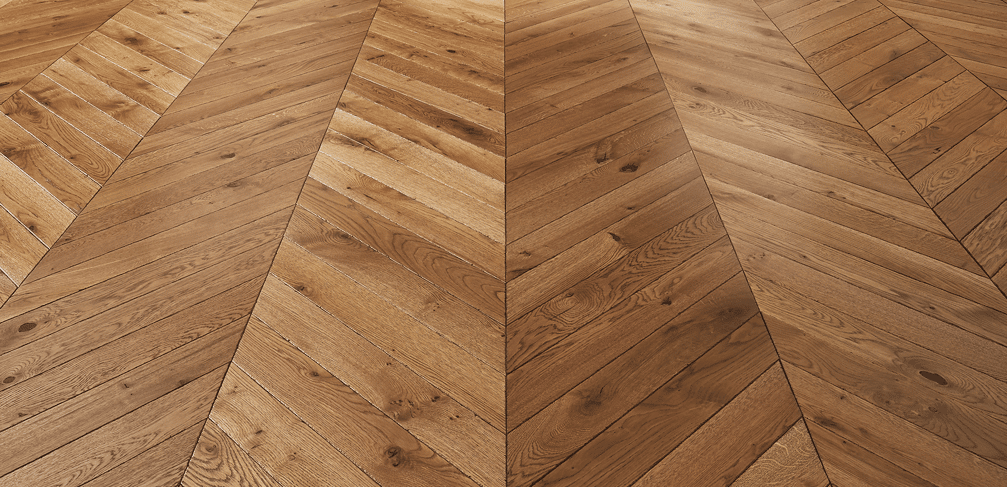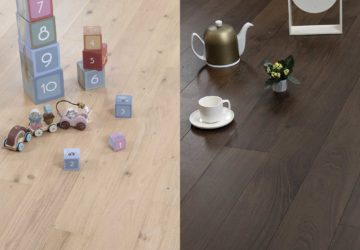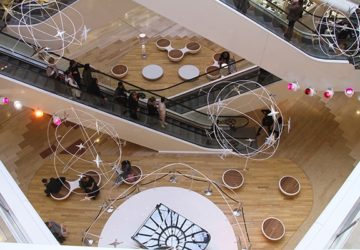How to lay a Chevron parquet floor?
Chevron is a laying pattern that requires a little more attention and dexterity than laying a random lengths style floor. Knowing how to lay a chevron floor can be helpful in avoiding problems later on. But first, where does this style come from?
Contants
The history of the Chevron parquet floor.
Chevron is a classic parquet pattern.
Chevron parquet floors first appeared in the 17th century, mostly in the homes of the bourgeoisie and castles. The fact that this pattern requires a very special laying technique, it became popular with the nobility, who made it a mark of prestige.
This is because Baron Haussmann used this Chevron pattern when he rebuilt part of Paris during the Second Empire. The dwellings in the new buildings, built from the 1850s onwards, were delivered with Chevron or Herringbone parquet flooring. These dwellings, often with high ceilings, conveyed an image of a charming, elegant and durable parquet floor. This type of installation has crossed several centuries of history, covering some of the most prestigious places in the world.
Today, you can rediscover the authenticity of the past, by combining it with a refined decoration. Chevron will give your home a unique atmosphere.

How to lay a Chevron parquet floor?
The floorboards are of the same length, and the ends are mitre-cut, usually at 45° so that the bays form right angles between them. Laid end to end, they form parallel patterns, playing with the light and the different species.
At Design Parquet, we create your chevron parquet in solid or Loft Pro (semi-massive parquet). We design your floor according to your wishes.
When laying chevron, it is important to ensure that the following requirements are met.
It is necessary to check the conformity of the support receiving the parquet (clean, dry, dust-free and flat).
Also, it is necessary to ensure that the conditions of the room to be parqueted are correct (humidity in the air, type of heating, etc…). In order to check if all the conditions are optimal to lay your parquet floor serenely, the reference document is the “unified technical document”, the DTU 51.2. It concerns the laying of solid parquet as well as engineered parquet.
Here is the procedure for a successful glued installation of a chevron parquet floor :
- It is essential to draw up a layout plan. You will avoid unnecessary cuts and a much better final result of your chevron parquet.
- Once the requirements have been checked and complied with, unpack several packages in order to mix the natural shades of the wood, as well as to separate the right and left hands.
- Assemble and glue 4 rows of chevron (4 Right Hands and 4 Left Hands) and let dry. This assembly will be your starting point for the rest.
- Using a laser, find the axis of your part. Hold the laser while you start the first bay. Place your preliminary assembly blank, and check the alignment of the floor tips with the laser. If this is correct, you can glue the joint. Allow to dry for 3 hours so that the glue sets properly.
- Once the assembled block has been glued to the subfloor, you can then continue laying the strips while checking with your laser that the floor is correctly aligned as the first bay is being laid.
- Continue the installation with the rows adjoining the reference bay. Do not forget the spacers at the foot of the walls to ensure the correct expansion gap (5mm to 8mm for a glued installation).
- Fill in the reserves along the walls.
- Remove the wedges 24 hours after laying. You can now install the skirting boards, joints… and enjoy your chevron-style parquet.
This article “How to lay a chevron parquet floor” is intended to be as concise and precise as possible. However, if you have any questions, do not hesitate to contact us via the contact form, or to consult the DTU 51.2 which is the reference for any manufacturer and layer of parquet.




